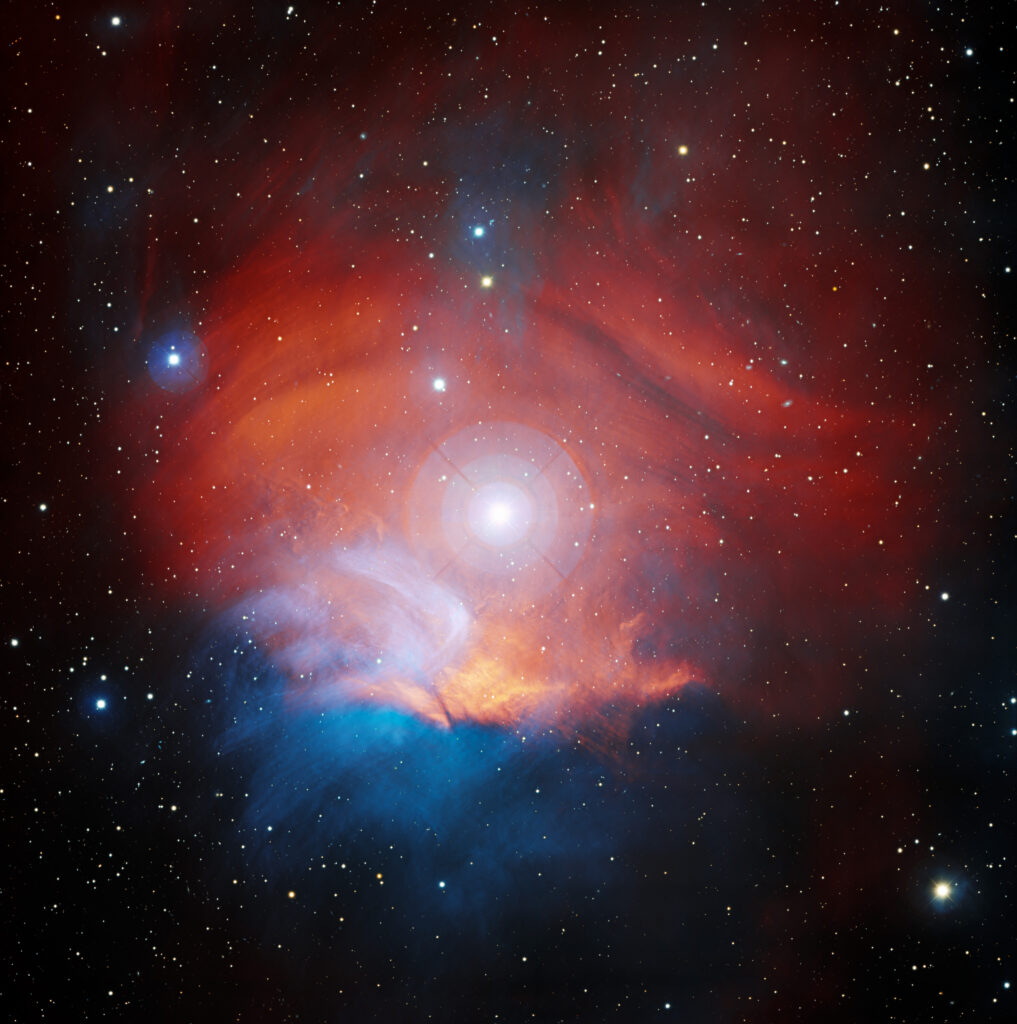The presented image was obtained using the Nicholas U. Mayall 4-meter Telescope located on the territory of the Kitt Peak National Observatory. It demonstrates the LBN 867 nebula, also known as the Raspberry Nebula.

Despite its unusual nickname, from the point of view of the structure, LBN 867 rather resembles not a berry, but an onion. The fact is that it contains three different celestial objects at once.
The emission nebula is responsible for the characteristic red color of LBN 867. It glows due to the ionization of hydrogen atoms by powerful ultraviolet radiation. Its source is the star HD 34989, which can be seen in the center of the image.
HD 34989 is a blue-white giant located at a distance of 1,700 light-years from the Sun. In the images from telescopes, it is a very bright object. In the terrestrial sky, the star is on the verge of being visible to the naked eye, its apparent magnitude is comparable to Uranus.
You can note that HD 34989 is surrounded by a characteristic bluish glow. This is the reflective nebula vdB 38. Unlike emission nebulae, reflective nebulae do not shine with their own, but with reflected light. In this case, its source is still the same HD 34989. We can say that the light of this star has created two nebulae at once.
Earlier, we published a magnificent picture of the nebula taken by the Hubble telescope in honor of its 33rd birthday.
According to https://www.noirlab.edu
Follow us on Twitter to get the most interesting space news in time
https://twitter.com/ust_magazine

